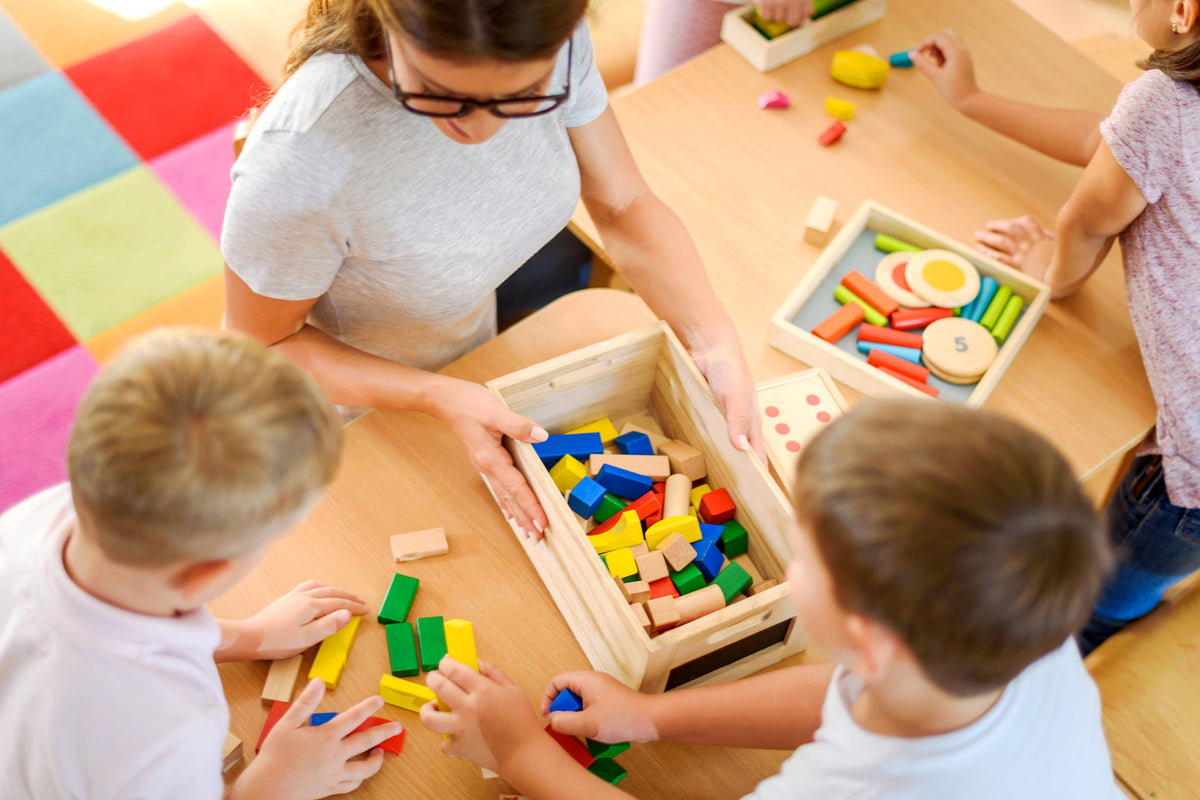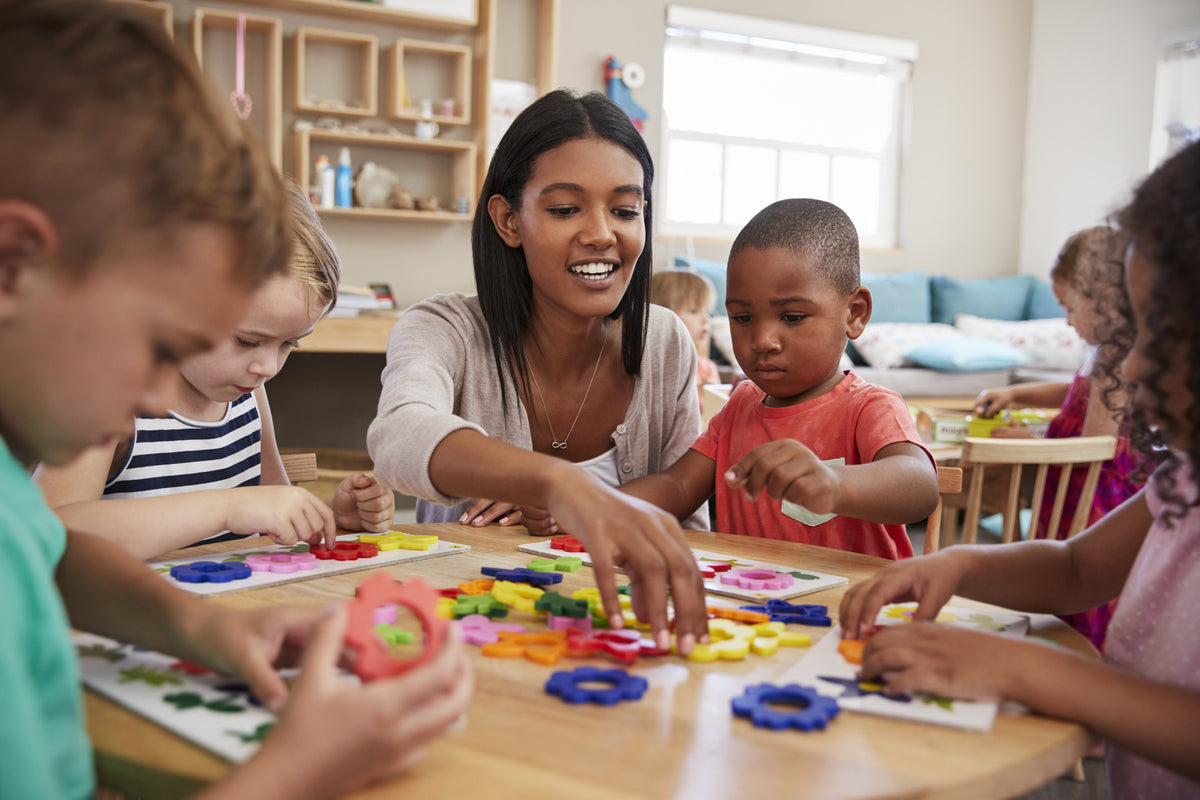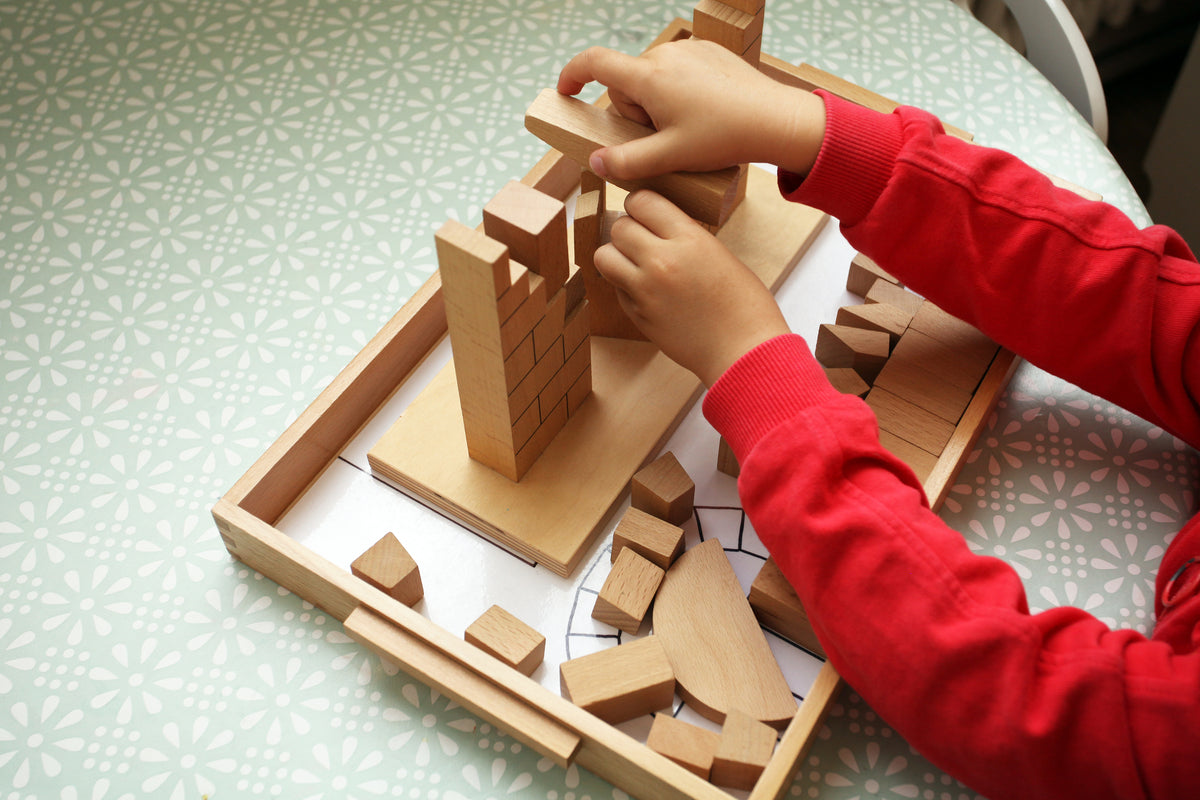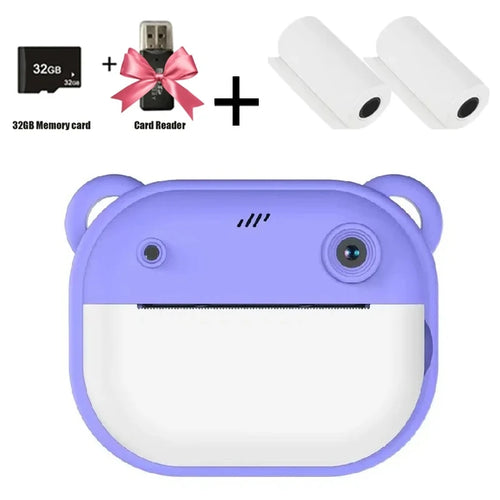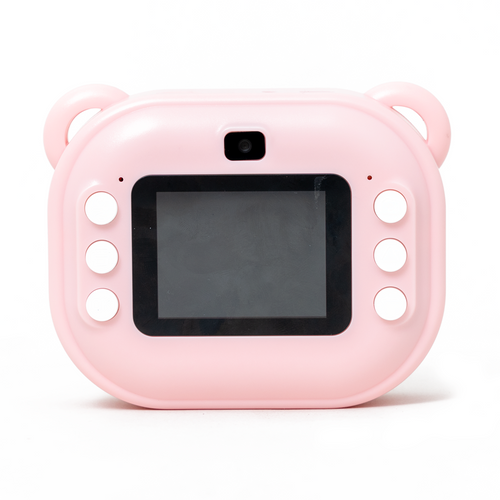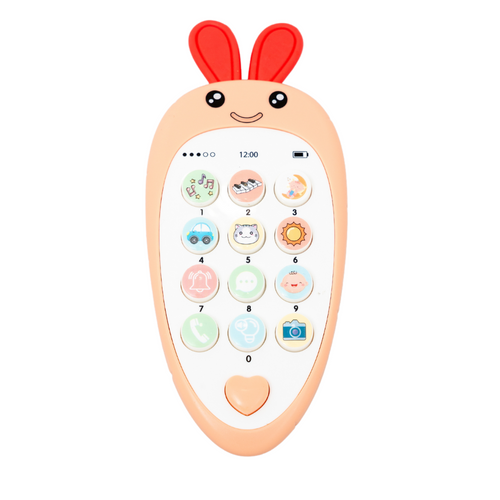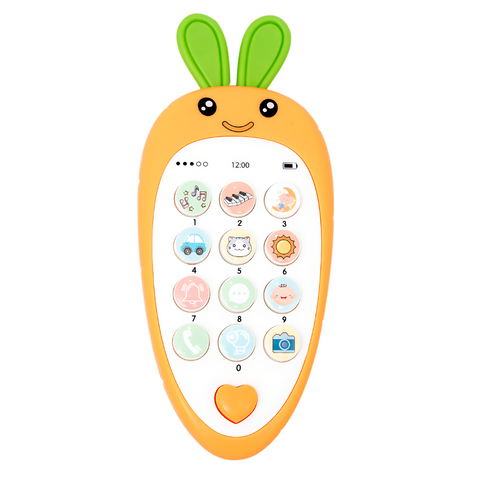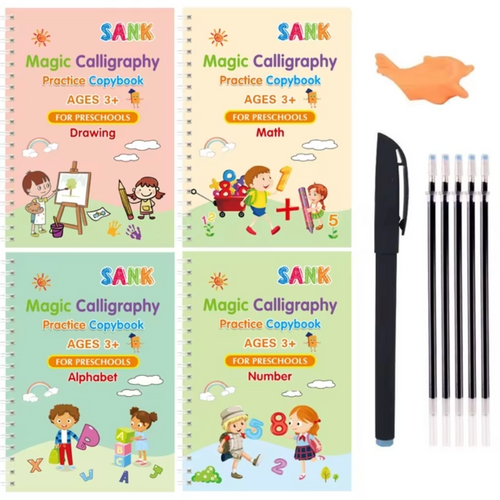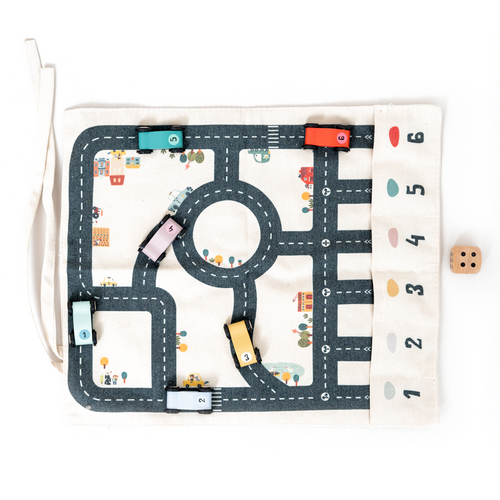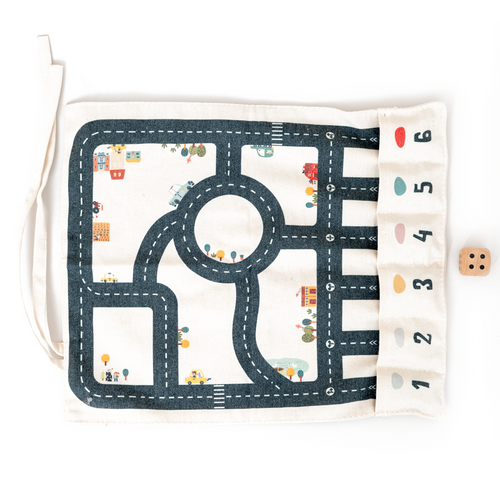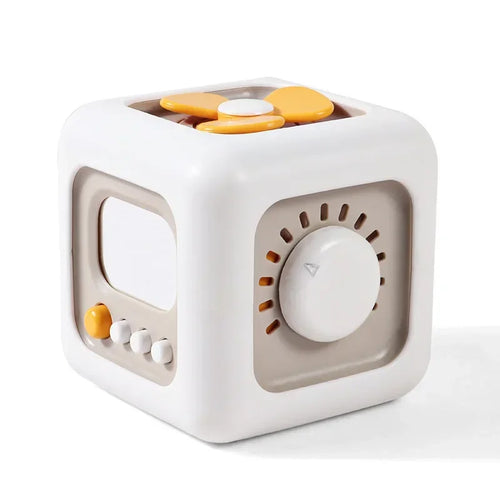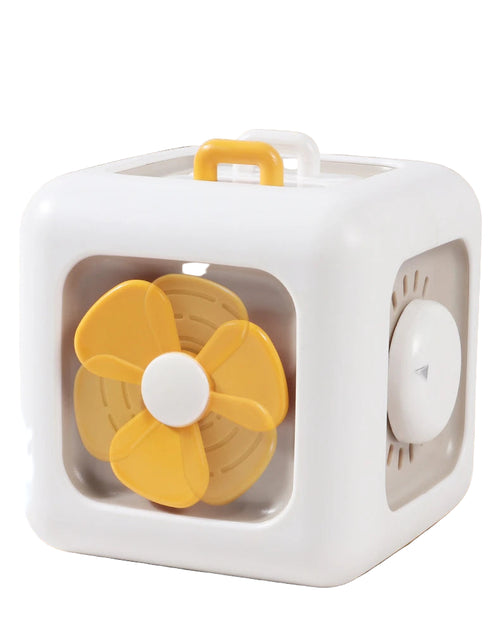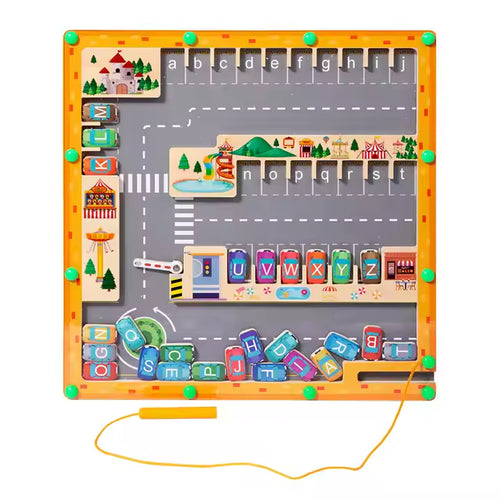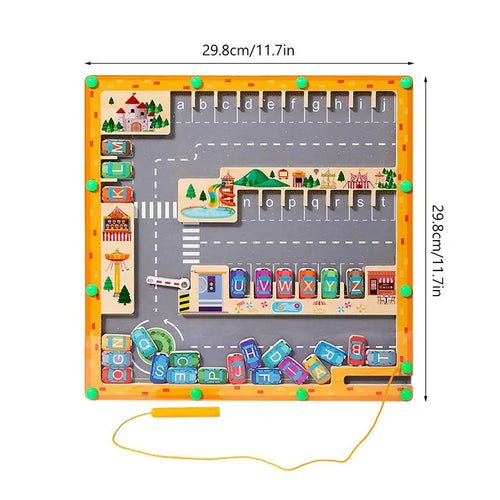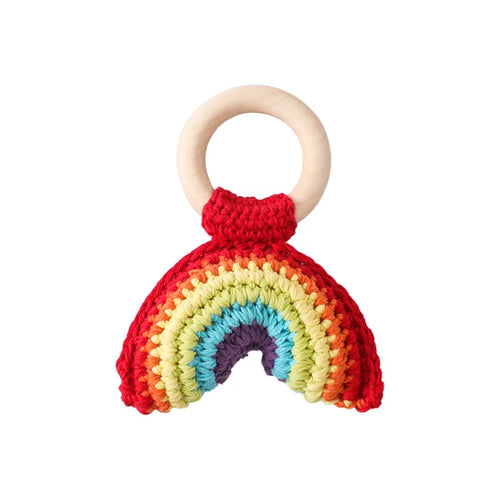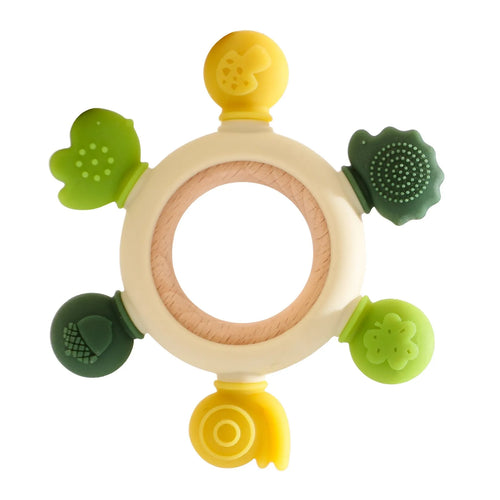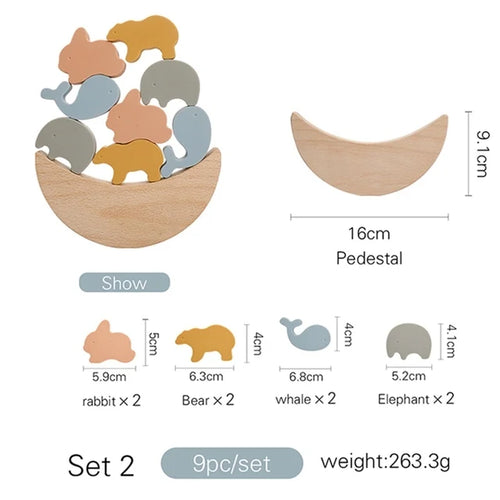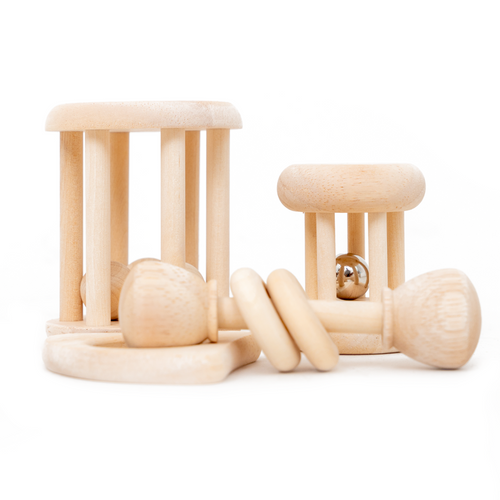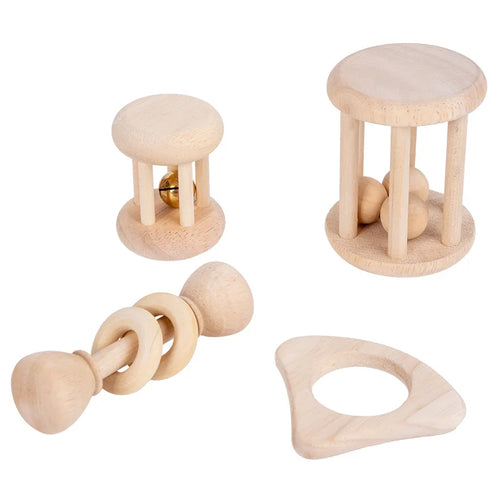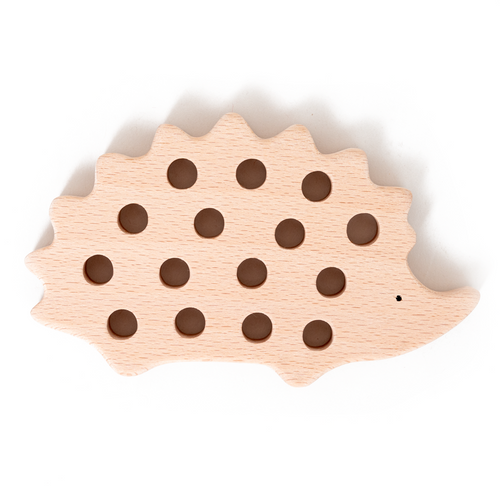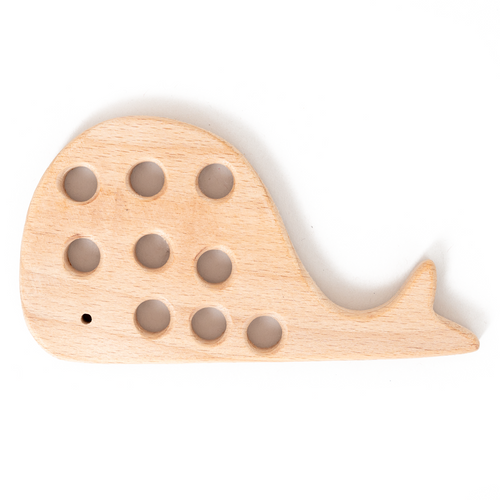Puzzles are incredibly beneficial to your baby’s development. By using puzzles, your baby is developing hand-eye coordination, enhancing their fine motor skills, learning how to match items, identifying shapes and colors, and improving concentration and language skills.
You can introduce your baby to puzzles from an early age, beginning with simple puzzles that only contain a couple of large pieces, and gradually working your way up to more complex puzzles.
12-18 Months
Your little one may be ready to begin simple puzzles around one year of age. The exact age that your child is ready to begin puzzles is dependent on each specific child. Some may be ready sooner, and some later.
When you begin to introduce puzzles to your baby or young toddler, keep it simple. Start with 1-, 2-, or 3-piece puzzles that have large pieces and a knob for your baby to hold onto.
Choosing puzzles that are engaging but not too complicated, is key. You want your little one to be engaged, but not overwhelmed. If the task seems daunting for your child, it may deter them from wanting to complete it.
A simple one-piece mirror puzzle is the perfect way to introduce puzzles to your baby. Babies love to look at their reflection, and they can practice object permanence by covering and uncovering the mirror.
18-24 Months
Within this age range, you can begin introducing puzzles that are slightly more complex. Puzzles with between 3-9 pieces are appropriate.
This puzzle is our Wooden 3D Puzzle Toy. The natural look of this puzzle is the perfect addition to your Montessori collection, and the small number of pieces keeps this puzzle manageable for your young toddler.
For a puzzle to be considered “Montessori” it typically includes:
Natural materials: puzzles made from wood are less stimulating and overwhelming for little eyes.
Realistic: stick to puzzles that include real items, like animals or food, if you’re looking for Montessori materials.
Developmentally appropriate: puzzles that contain numbers or letters are a bit advanced for a 1.5-year-old. Sticking to realistic items or simple shapes may be more appropriate at this age.
24-36 Months
You can begin introducing simple jigsaw puzzles around this age. Introducing floor puzzles with less than 24 pieces can also happen in this age range.
Our Wooden Jigsaw Puzzle is engaging, bright and colorful, and challenging enough to hold your child’s attention without causing overwhelm.
36-48 Months
After about 3 years of age, you can begin to introduce puzzles that are put together to create a picture. Start with less pieces while your child learns how to create a simple puzzle, then work your way up to more complex puzzles.
When your child reaches preschool (or maybe even sooner) and begins to learn more about shapes, you can encourage shape matching and identification with our Wooden Multifunctional Box.
This puzzle is more challenging than flat-surface puzzles, as your child needs to not only match the shape but drop it into the box vertically.
If you’re looking for a way to help your child to develop spatial awareness, fine motor skills, hand-eye coordination, and the ability to concentrate and match, introducing puzzles early on is the way to go.



